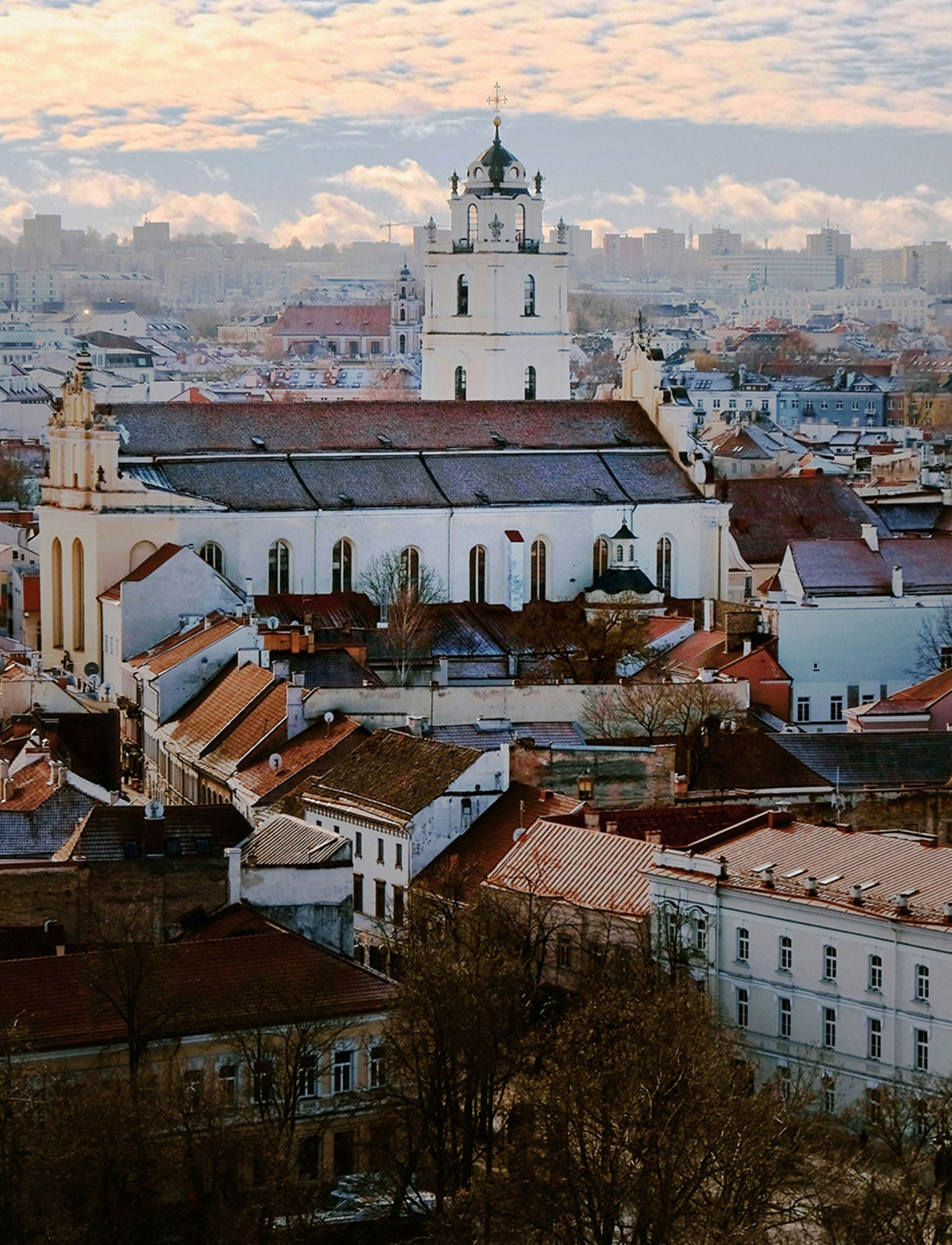
Somewhere between a Nordic food lab and rave afterparties, the Baltic capital makes space for cerebral luxury
There are cities that come at you fast, and then there’s Vilnius. It holds its pace, its humour and its strangeness close. If tabis on a wet pavement make sense to you, the Lithuanian capital will too. Nested at the confluence of the Neris and Vilnia rivers, one of Europe’s largest surviving medieval old towns stretches out in soft pinks and peeling baroque, framed by forests. On paper it’s all cathedrals and cobblestones. In practice: one minute you’re passing a 17th century church, the next you’re in a Soviet-era warehouse where someone is DJing in a balaclava and pouring natural wine into chipped porcelain.
This is a city stitched together by rebels, artists, architects and avant-garde outsiders. A place where the mayor once crushed an illegally parked car with an armoured tank (later accepted an Ig Nobel Prize at Harvard for it.) Where a neighbourhood dubbed Užupis lands you in a self-declared bohemian republic with its own surrealist constitution, that guarantees the citizens the right to be idle. It’s funny, it’s punk, it’s sincere, and yet, it wears its cool lightly. The best time to visit would be late spring (May-June) or early autumn (September-November), when Vilnius gives you long cafe hours, leafy lights and cultural momentum, without the tourist trappings. Here’s a guide to everything Vilnius:
Baroque bones
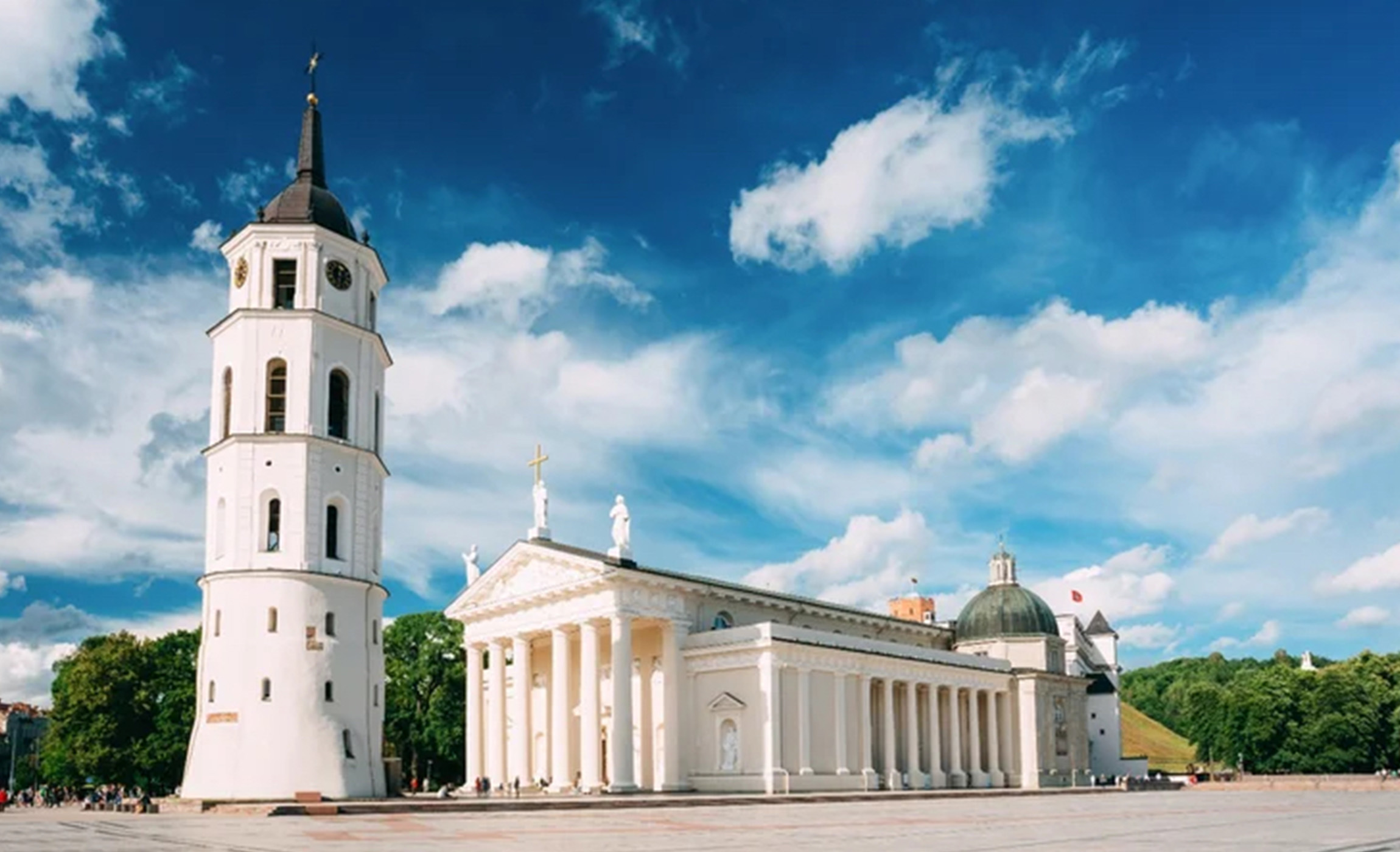
Vilnius is one of Europe’s most architecturally rich capitals, where centuries of influence unfold block by block. The Gothic period is marked here, most strikingly by Church of St. Anne, a masterpiece of Flamboyant Gothic architecture, its intricate façade of red brick, pointed arches, and delicate tracery remarkably well preserved. Nearby, the Bernardine Church combines Gothic austerity with Renaissance details, its tall belfry and carved interior offering a window into 15th-century craftsmanship. Baroque architecture flourished in the 17th and 18th centuries, transforming the city’s skyline with theatrical curves and ornament. The Church of St. Peter and St. Paul is an exceptional example, with over 2,000 stucco figures adorning its whitewashed interior. At the heart of the Old Town stands Vilnius Cathedral, neoclassical in form, yet layered with history, marking the city’s shift towards Enlightenment ideals in the 19th century. The Presidential Palace nearby reflects that same neoclassical refinement: symmetrical, elegant, and quietly commanding. For design lovers and architecture enthusiasts will find Vilnius both walkable and visually compelling.
Creative scene: must see art and culture
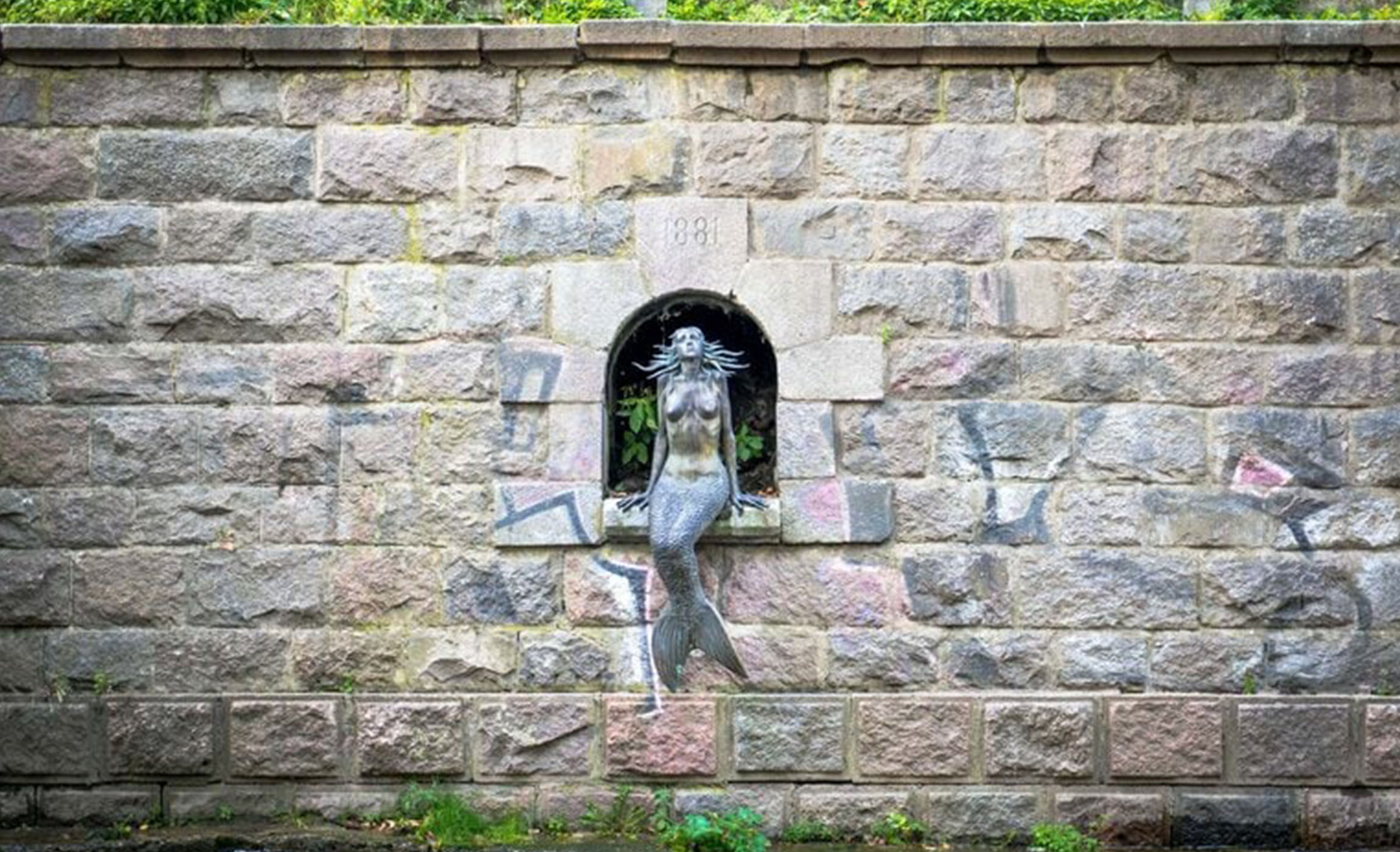
LITERATŲ STREET
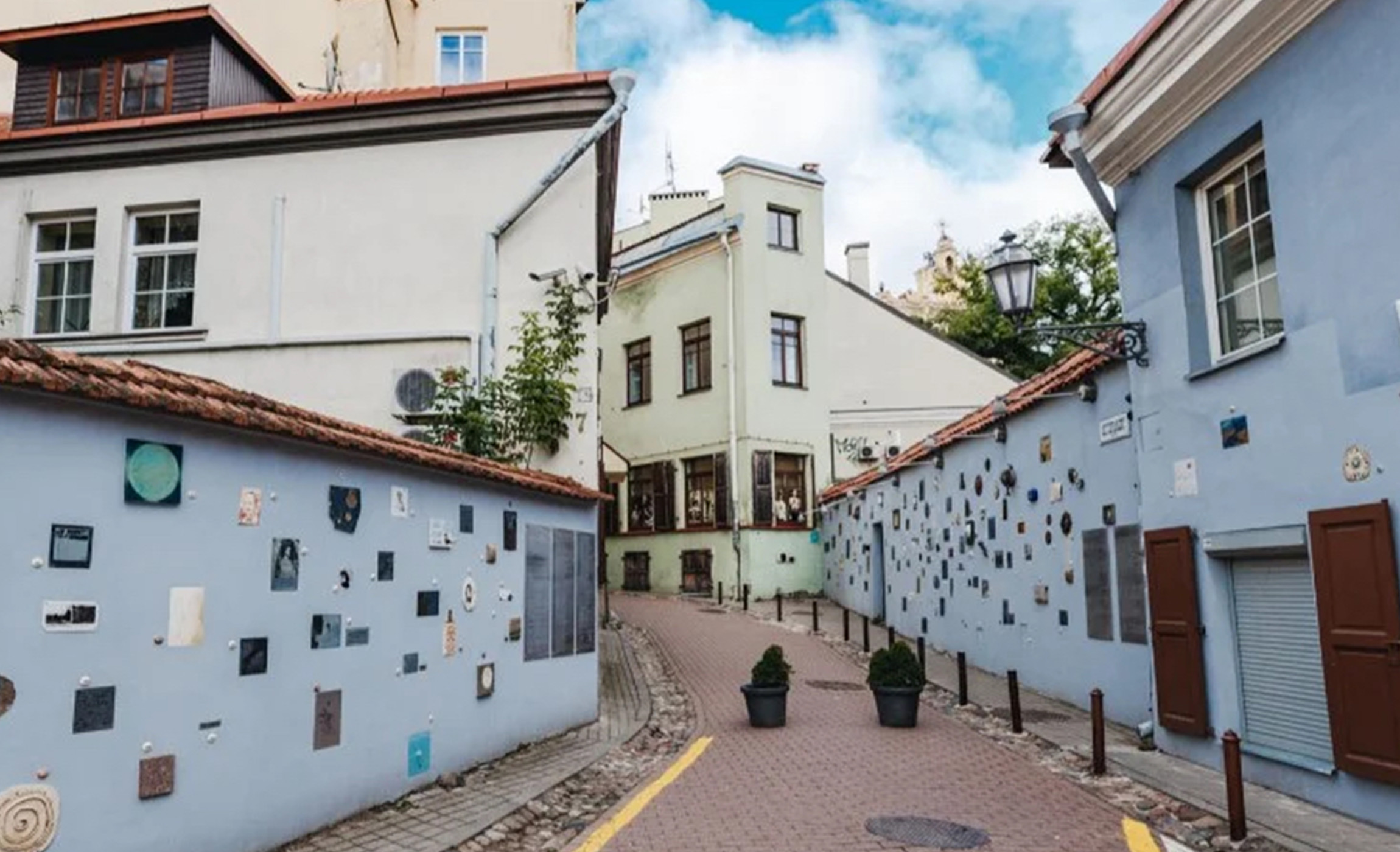
Poet Adomas Mickevičius, also known as a Slavic bard, used to reside by this street. Today the street itself cosplays as an unconventional gallery of sorts, some 200 works of Lithuanian and foreign artists adorn the walls and pay homage to Lithuania’s literary pioneers. The effigies are made of metal, wood, glass and other materials: each one a gift to a literary master, chosen by the artists themselves.
JONAS MEKAS CENTRE OF VISUAL ARTS
The Fluxus movement in the 1960s and 1970s who engaged in experimental art performances which emphasized the artistic process over the finished product. Užupis has the third-largest collection of Fluxus pieces. In addition to sharing artwork by Jurgis Mačiūnas and Jonas Mekas, the exhibition also introduces new creators of cinema, video and computer art. This is a centre where young artists find a place for themselves; the art here is living, created now, and might someday be considered avant-garde.
TARTLE
This is the home to the largest collection of paintings about Vilnius, as well as sculptures, old maps of Duchy of Lithuania and Poland, historical graphic works, and one of the first books published in Lithuanian “Postilė” by Jonas Bretkūnas.
MO MUSEUM
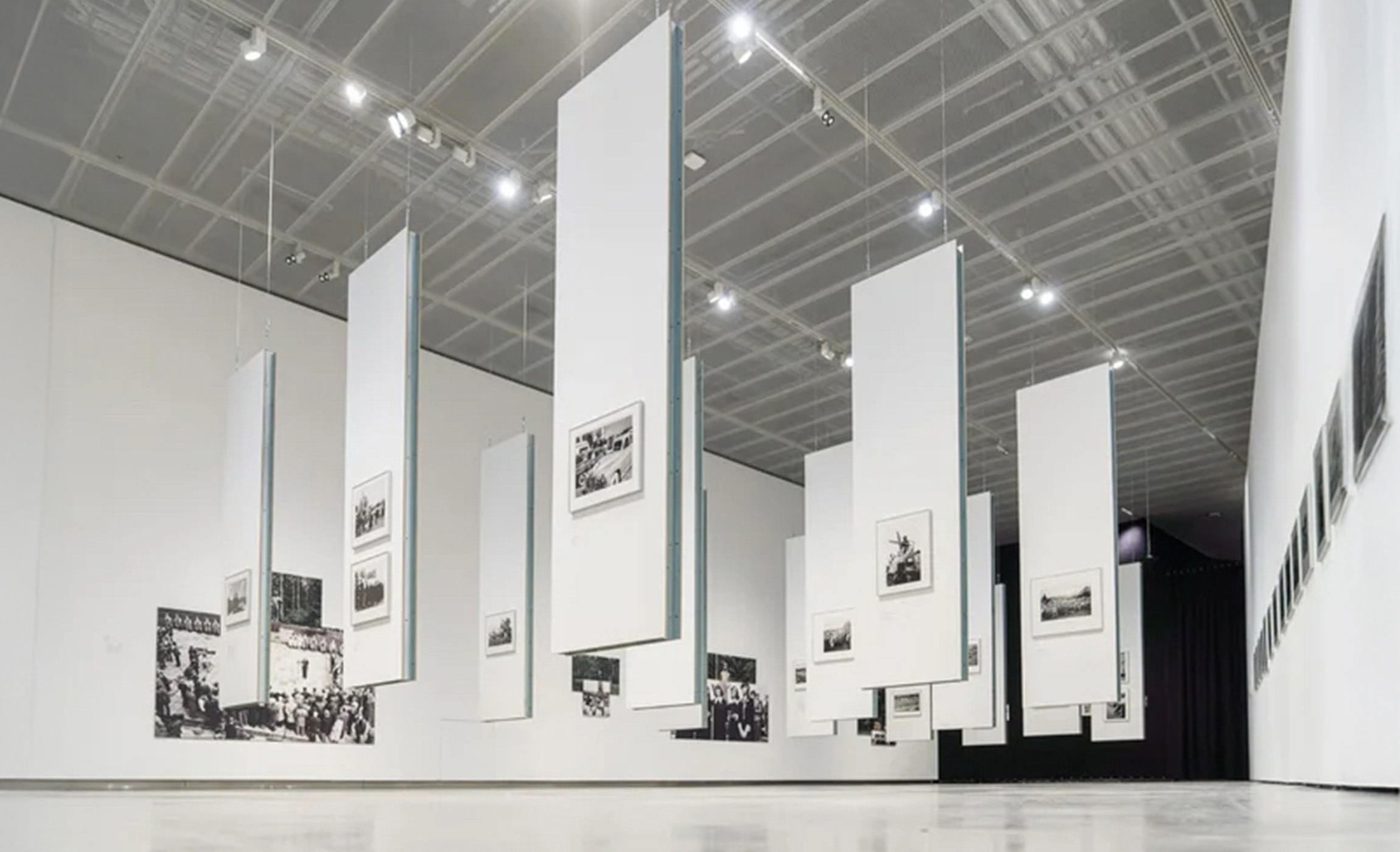
Designed by architect Daniel Libeskind, Vilnius’ newest museum, has about 4,500 works of contemporary Lithuanian artists from 1960 to the present. The MO museum with its sprawling sculptural garden, terraces and uniting public spaces like the library, reading room and café promotes the idea of meaningful leisure and gathers an active society of art lovers.
Lukiškės Prison 2.0
Lukiškės Prison was guarded by high walls and barbed wire, is now an artistic venue Lukiškės Prison 2.0 home to about 250 creators and artists, it’s a place where creatives can learn and explore has even served as the backdrop for Stranger Things season 4. Sit down for a refreshing drink, attend a concert or take a tour to get a glimpse of life in the former prison.
Art Studio of Jonas Bugailiškis

Located in a small courtyard just steps from the gates of the Aurora is the art studio of sculptor and instrument maker Jonas Bugailiškis renowned for his woodwork. There are fabulous wooden sculptures, combining traditional Lithuanian art with the artist’s stunning imagination. Lutes and lyres share space with twisted figures that feel half-myth, half-modern anxiety.
Where to stay?
Pacai Hotel
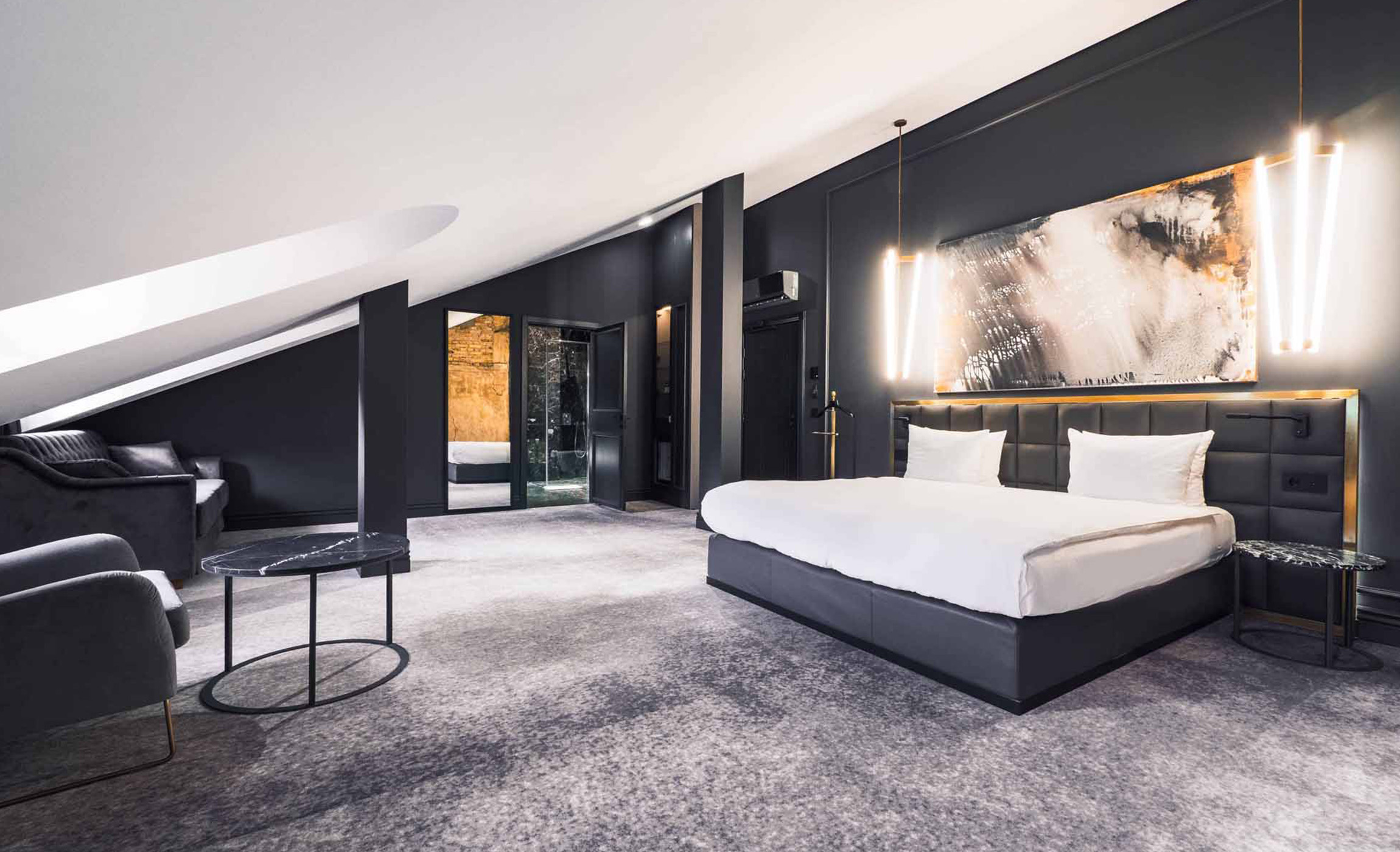
Hotel Pacai in the heart of the old town, was originally built in the 15th century, witness to Vilnius’ history right from Napoleon’s march, through the Soviet era, and into modern independence. Its restoration pays homage to every era the city has endured, echoing the baroque grandeur while with a contemporary twist. Think parquet floors that creak with character, centuries-old wooden joists and hand-painted frescoes emerge from beneath carefully preserved plaster. The interior palette of refined black and white is softened by natural textures and curated local artworks. The rooms are indulgent with heated floors, oversized bathtubs, with notes of custom Lithuanian scents wafting through the air, with crisp service. The in-house restaurant, Muros, leans Nordic-Baltic with seasonal twists. It’s the kind of place where art collectors and architects tend to check in. The public spaces are uniformly graceful, from the dimly lit cocktail bar and the. The spaces are uniformly graceful from the dimly-lit cocktail bar and the acclaimed restaurant to serene spa treatment rooms and a beautifully landscaped courtyard that invites lingering, whether in summer sun or under crisp Baltic skies.
Stikliai Hotel

Housed in a former glassblowers’ guild hall, the hotel by Relais and Chateaux wears its history with quiet confidence, think parquet floors, antique chandeliers, velvet drapes. The winter garden café here is a locals-kept secret for afternoon champagne, while the restaurant serves French-Lithuanian fine dining under a glass dome.
Artagonist Art Hotel
Housed in a 15th-century townhouse on Pilies Street, Artagonish is a conceptual hotel, with an artistic heart. Each of its 34 rooms is different, layered with bespoke murals, original works by Lithuanian contemporary artists, and raw design elements like exposed brick, matte steel, velvet, and glass. It’s part gallery, part boutique hotel, but never too self-serious. The mood? A little surreal, a little theatrical, with just enough shadow and texture to make it feel like you’ve checked into someone’s off-duty imagination. Breakfast is served beneath a vaulted brick ceiling, and the front desk knows where to find a Negroni at midnight or a poetry reading in a basement bar.
Club (adjacent) crawl
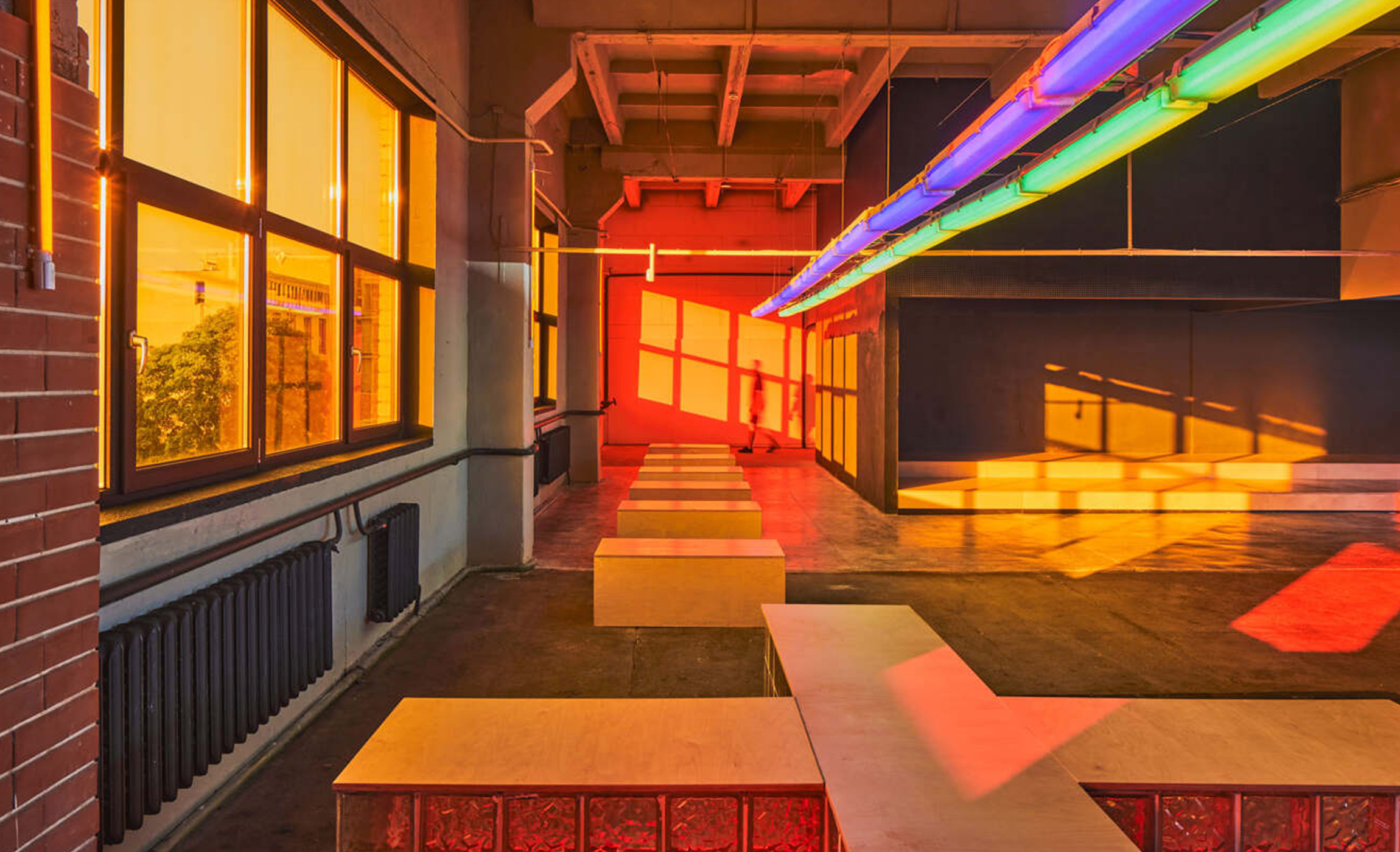
1986 Gallery
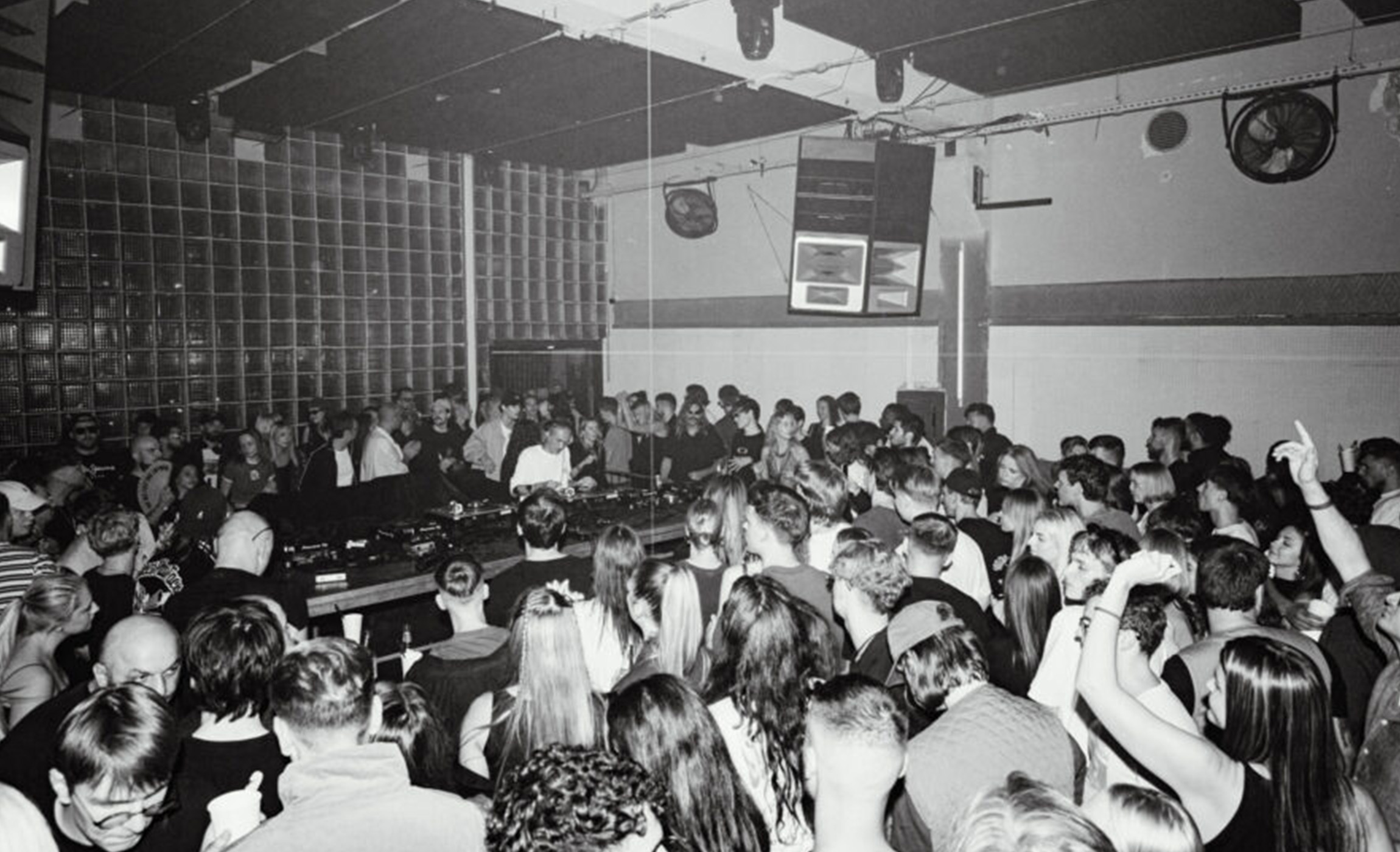
If Vilnius had a basement brain, this would be it. Housed in an old radio parts factory on Pamėnkalnio Street, 1986 is where the city’s weird and wonderful leak into the night. It’s not a club in the traditional sense, more like an art space that spirals into chaos after dark. During the week expect community radio discussions, film screenings and theatre. Come weekend, the bass kicks in. Crowd wise, think Berlin burnouts, fashion students, queer punks, and DJs who make zines. 1986 is not your overly stylized curated instagram cool, it’s the actual scene. There might be a warehouse rave, a queer voguing night, or a trance set with visuals that feel like a fever dream, but do not expect a walk-in club night, we’d suggest DMing them before paying a visit.
Peronas
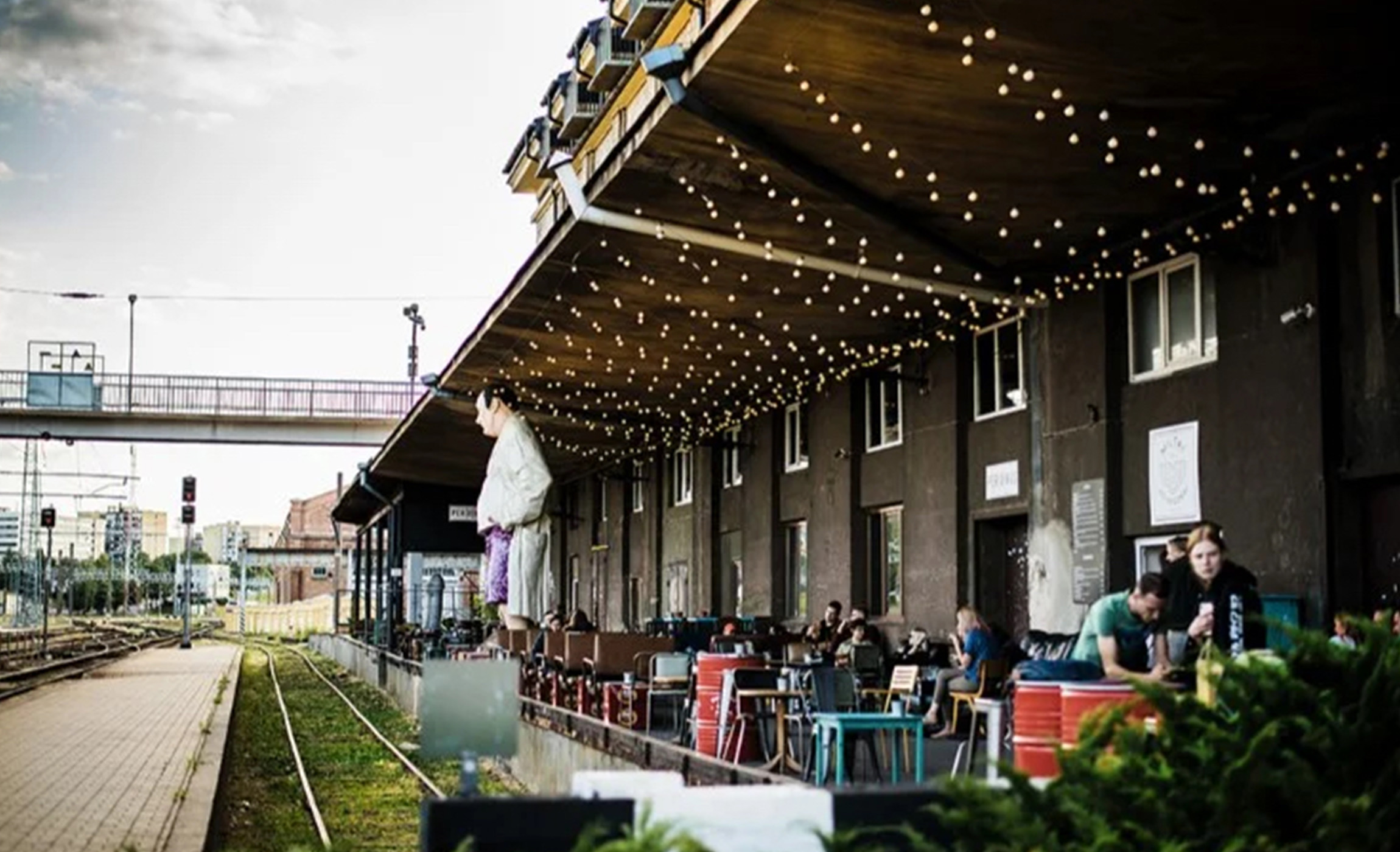
Picture a rusted railway terminal next to train tracks, turned into a techno hangout. That’s Peronas. There’s no branding, no door policy beyond respect, and a lineup that ranges from deep hardgroove to trance-adjacent sets. It’s raw, local, with a sense of everyone-in-it-together energy you don’t get in glossier venues.
LOVE
A cocktail den hidden under the pink neon heart on Pylimo Street, LOVE is a contemporary cocktail bar focusing on seasonal, natural and locally sourced ingredients, serving cocktails, beer, wine, non-alcoholic drinks and snacks. Wednesdays feature DJs spinning home-listenables, sourced from the city’s music nerd core Creative types come for the cocktails made from local herbs and Hales Market produce, and the crowd lingers late, sipping on seasonal concoctions mingled with an after-dark hush.
Cafe hopping
Crooked Nose & Coffee Stories
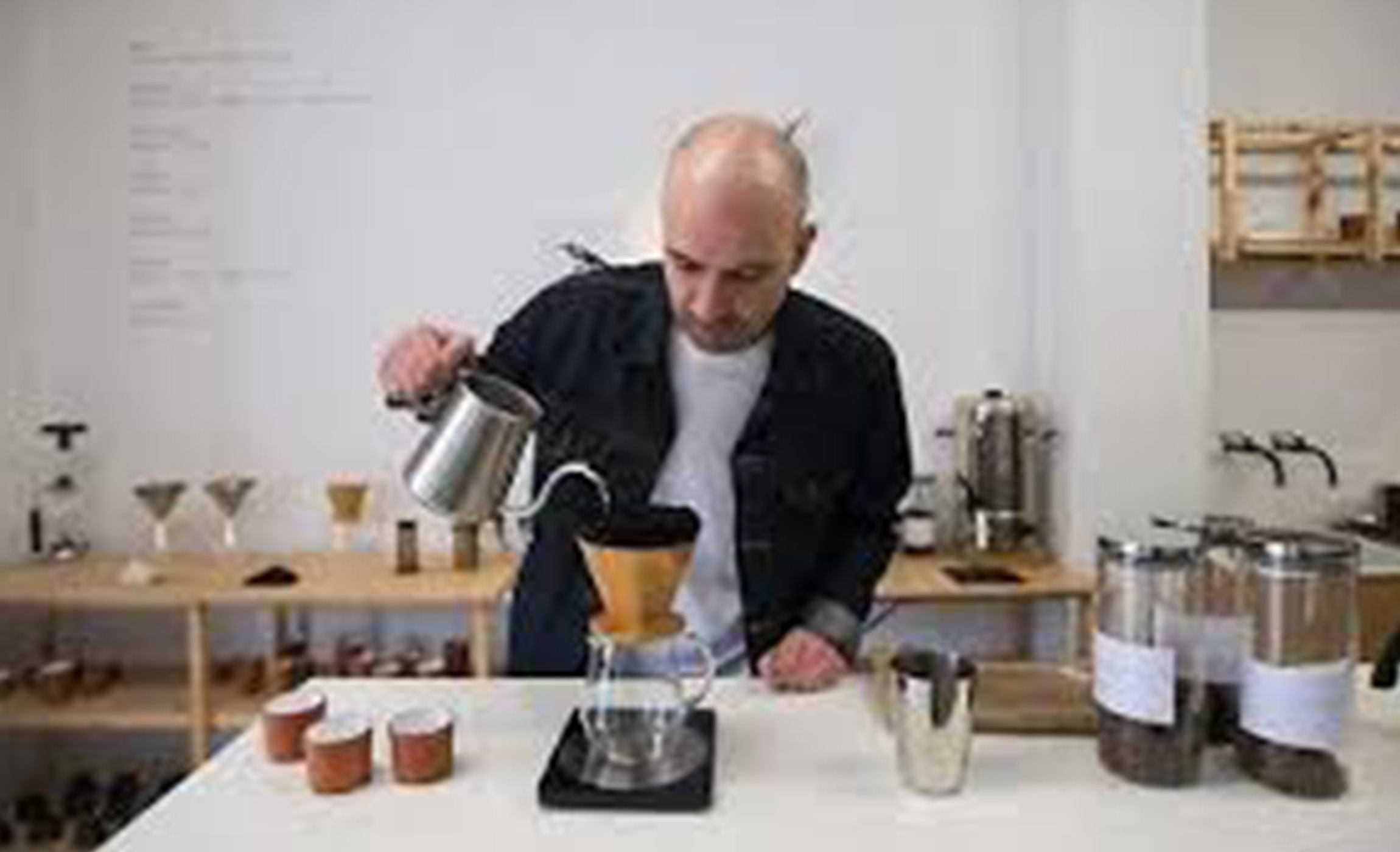
Crooked Nose & Coffee Stories is a micro-roastery-cum-lab is helmed by Emanuelis Ryklys, who quit advertising to obsess over beans and brew. Here you choose your beans, pick how you want it brewed, Chemex, Aeropress, whichever personal rig you like (just not espresso) and then savour the ritual. They also host tastings and the annual Dark Times Coffee Conference, a mini-festival for coffee geeks.
StrangeLove CoffeeCo.
Tucked opposite Bernardine Gardens, StrangeLove is a roastery-come-café with polished but relaxed energy. They roast in-house coffee beans and offer brunch, vegetarian fusion dishes, and cocktails-yet-not-exactly cocktails. The sunny backyard terrace is a favourite for laptop types, local illustrators, and brunch crowds.
Taste Map Coffee Roasters
Vilnius’s specialty‑coffee elder statesman. The Sensory Room is a cave‑like, design-conscious space dedicated entirely to the coffee, barista‑championship standards, single-origin verticals, classic V60s, intriguing barrel-aged brews. Expect serious tasting menus, silent concentration, and baristas who might drop origin stories like graffiti tags. Ideal for coffee nerds cruising for caffeine with minimal distractions but maximum sophistication.
Wine and dine
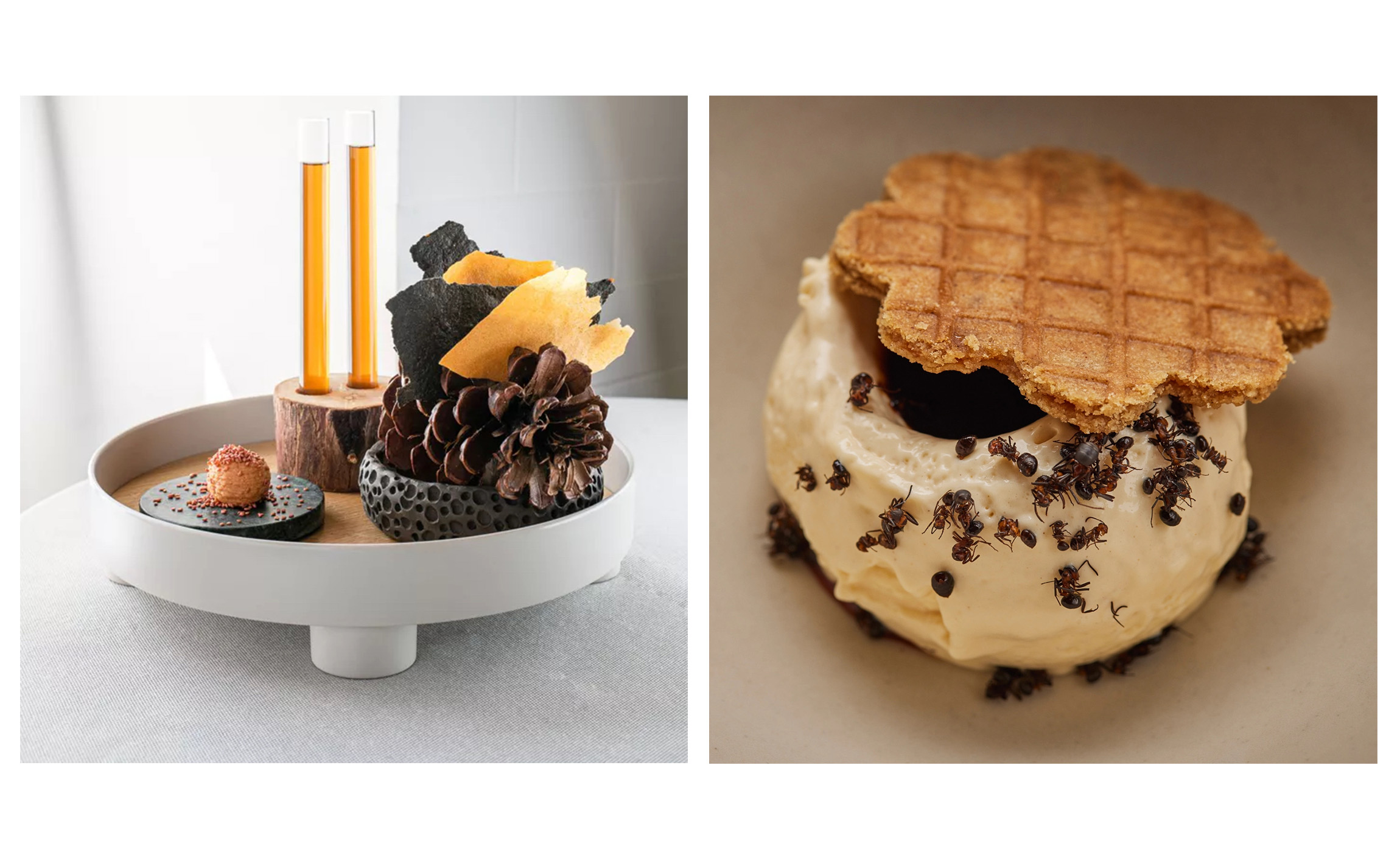 Nineteen18
Nineteen18
Tucked inside the elegantly restored Senatorių Pasažas, at Nineteen18, Chef Andrius serves up a Michelin star fare. You are given a sealed menu, to open either now or later which comprises a series of around 10 dishes that flow effortlessly into one another. Think oxalis leaves tucked under milk skins, barley miso in handmade ceramics, and reindeer moss that tastes better than it sounds. All ingredients are sourced from a single farm just outside the city. It’s deeply Lithuanian, wildly modern, and easily among the most ambitious kitchens in the Baltics
Demo
Once an industrial loft, now a sensory vault is Tadas Eidukevicius’ Demo, that is a cafe by the day and transforms into a One Michelin Star restaurant by night. It’s deeply personal, wholly immersive, and without a shred of pomposity. The best seat? Anywhere you can see the chefs plating like sculptors. Demo is also the recipient of a Michelin Green Star for 2025. The suckling lamb and kogel mogel here are a must try.
Pas mus
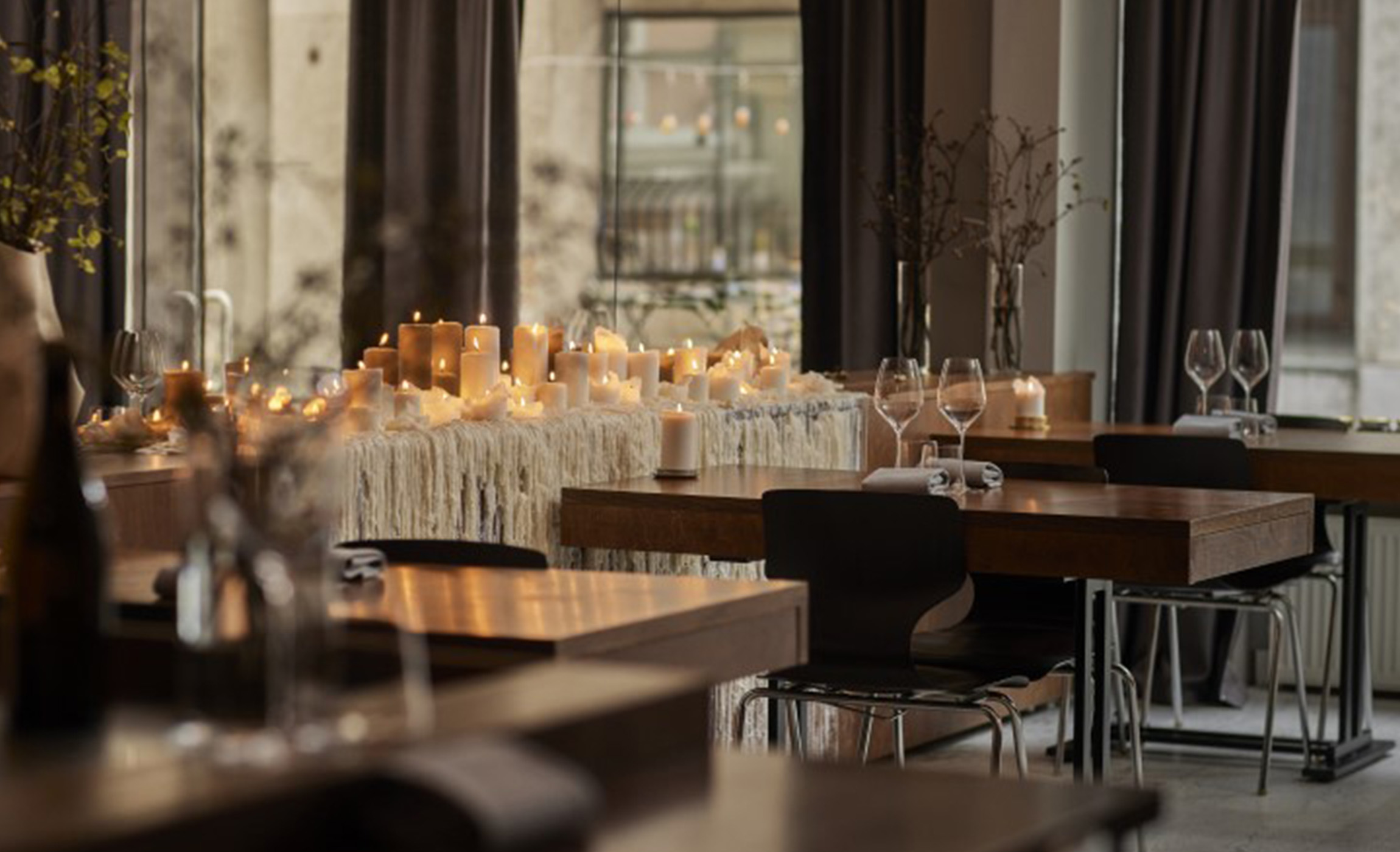
Hidden in the same courtyard as Nineteen18, Michelin starrer Pas mus strikes a more casual tone. Seasonal vegetables are the stars at the speakeasy: roasted, pickled, torched, fermented, sometimes all four. Their cepelinai (Lithuanian dumplings) come reimagined and pillow-soft, served with dill oil and slow-braised lamb. Chef Vita and her small team curate a thoroughly welcoming and warm experience, as you are sat on wooden tables crafted by Vita’s partner. Ingredients sourced by Chef Vita on her foraging trip often find their place on the table under the dimly lit candlelight.
Amandus
At Chef Deivydas Praspaliauskas’ Amandus each dinner is a three hour long gastronomic show. Every evening at 7pm sharp Chef raises the curtain on a three-hour culinary performance. One single, shifting tasting menu staged with cinematic pacing. Dishes are plated live across a central table like edible sculpture, then carried to your seat by the chef himself or one of his linen-clad co-conspirators. While the menu changes monthly, there are a few signatures not to be missed such as the Chef’s beetroot bread. It’s a restaurant that thrives on intimacy, surprise, and conversation, with a side of wine.

 Add to favorites
Add to favorites
